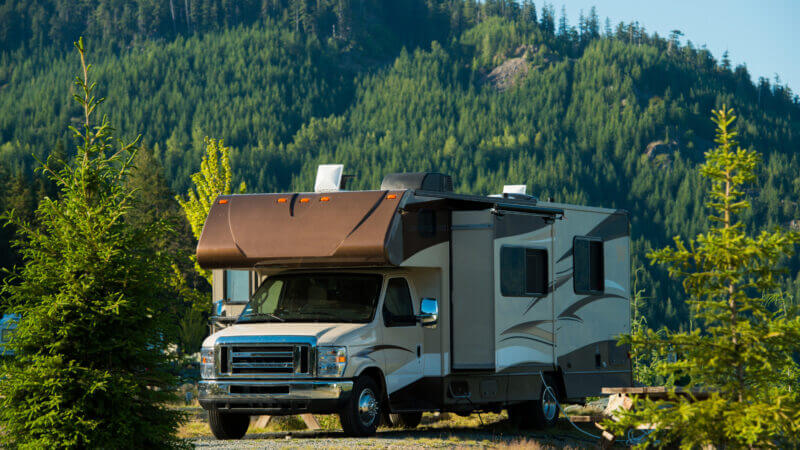Table of Contents Show
You’ll likely begin your RV adventure by deciding what vehicle you want. Will you choose a motorized RV or a travel trailer? Asking yourself questions like “How tall is an RV?” “Where will I want to take my rig?” and “What amenities do I need?” will help you determine what RV is best for you and your family.
The RV’s height is an essential tenet for trip planning. You’ll need to know if your RV will fit under certain bridges, in your garage, or even in certain campgrounds. To help you make your choice, let’s see how to determine how tall an average RV is.
How Tall Is an RV?
When we talk about RV height, we mean exterior height. Although interior size is important for comfort, exterior height often dictates where you can travel safely. You typically take external measurements from the ground to the top of the highest point on the roof.
Most coaches, campers, and trailers are between 9’ to 13.5’ tall. There are some exceptions to the rule, but these general measurements should assure you that most interstate bridges and overpasses will be high enough. They have a standard 16’+ clearance.
But you shouldn’t make assumptions when it comes to urban underpasses! City and county roads have different height requirements, and even older bridges can be precariously inaccurate.
Does RV Height Include the Air Conditioner?
The biggest mistake RVers can make when judging the height of their rigs is to assume that the manufacturers’ measurements are correct. When looking at motorhomes and travel trailers of any type, their listed sizes sometimes do not include anything attached to the roof. This includes air conditioners, vent covers, antenna, and satellite dishes.
You will need to add their measurements to the overall height of your vehicle for accurate measuring. When you measure your RV, be sure that you are on flat ground and if you have a travel trailer, fifth wheel, or toy hauler you’ll want to be hooked up to your truck. Take a measuring tape and measure from the ground to the top of your roof (this is easier with two people). Then measure your air conditioner, or whatever the tallest feature is on your roof, and add it to the measurement of your RV. Now you have your true RV height. It’s best to write it down and put it somewhere you can see it quickly while towing, like taped the bottom corner of your windshield.
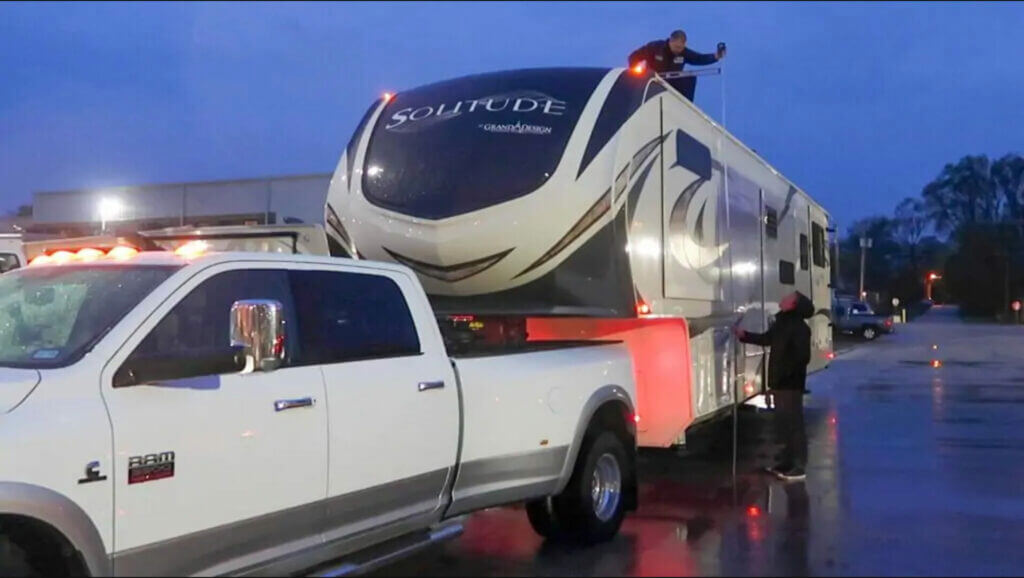
What Is the Maximum Height of an RV?
There’s no official maximum height for RVs, but manufacturers to date have capped their height at 14’. Most rigs fall safely under that height, but as buyers demand more space and luxury, there’s no telling how designs will change and grow to meet consumers’ requests.
Many states have laws regulating the maximum height of RVs on their roads. For instance, Georgia has the most stringent rule with a maximum of 13.5’. While Alaska is more lenient at 15’. With various requirements in every state, it’s hard to keep track of where you can drive taller rigs and where they might have navigating difficulties.
The Federal Highway Administration has set a minimum clearance on interstate highways at 16’. However, we’ve seen several bridges with warning signs about 15’ clearances on our travels. Keep in mind that repaved roads may reduce an overpass clearance by up to 6”.
We’ve all seen what happens when drivers misjudge the height of a gas station canopy or railroad underpass–you must know how tall your RV is. You can also utilize trip planning software and RV GPS units that note these measurements when plotting your route.
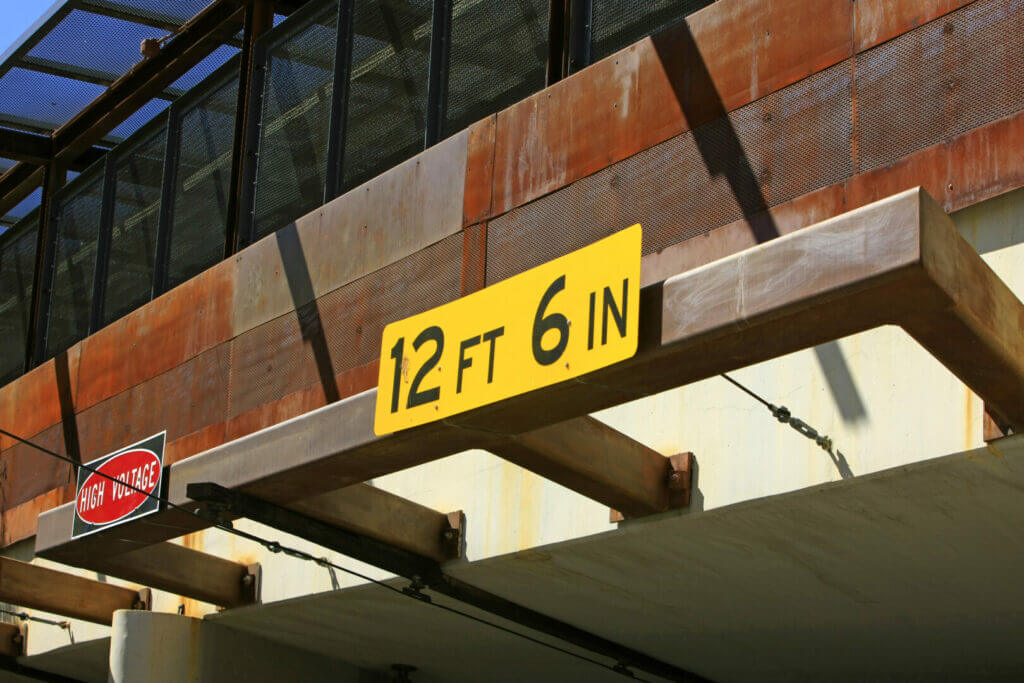
How Tall Are Travel Trailers?
Pull-behind trailers, also known as bumper pulls, are between 10’ to 12’ tall. These travel trailers include everything from R-pods to Airstreams and are normally 14’ to 40’ long. These days, they also have many rooftop accouterments like cellular boosters, air conditioners, and satellites. So add those additional inches (and feet) onto the manufacturer’s measurements.
How Tall Are Fifth Wheels?
Fifth wheels have become the top contenders for vertical growth increases, as what was once a bedroom over the hitch has grown into a stand-up suite in many models. This has stretched the height measurements to somewhere between 12′ to 13.5’. An added air conditioner and vent cover can put these luxury homes-on-wheels over the top on height limits. Be sure to measure carefully and plan your travel routes in detail.
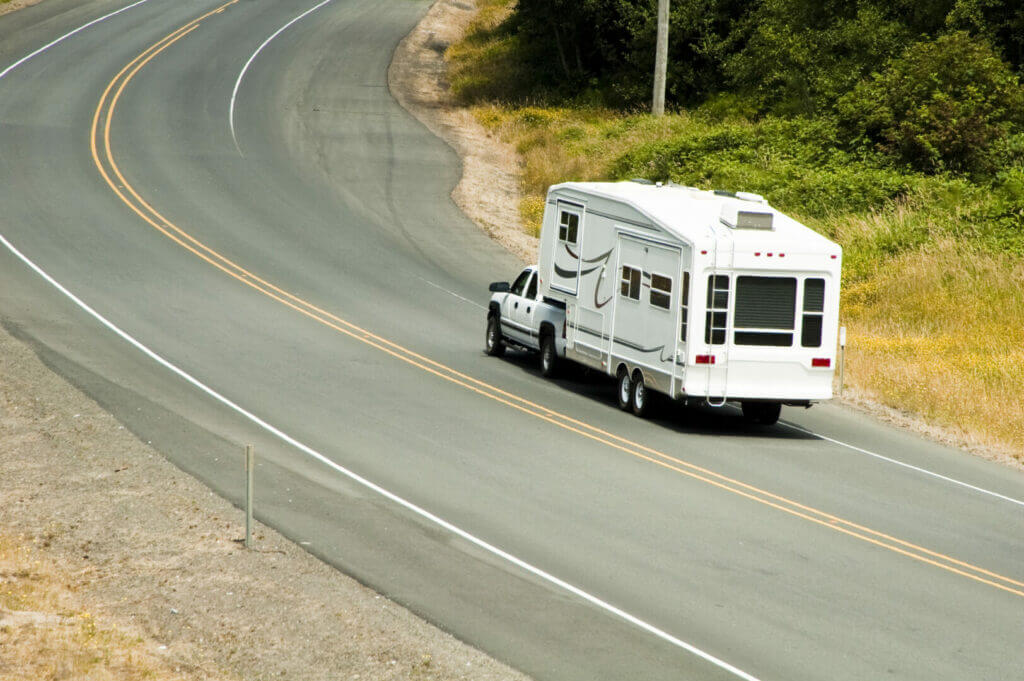
How Tall Are Class B Motorhomes?
Breathe a sigh of relief if you’re purchasing a newer Class B motorhome. Older versions were the same height as a truck with a topper, but more recent designs allow campers to stand up fully, with interior measurements around 7’ tall and exterior heights at 9’ to 10’. They’re also easier to maneuver, with lengths in the 17’ to 22’ range.
How Tall Are Class C RVs?
You can easily recognize these motorhomes with a bed over the truck cab. They have exterior heights between 10’ to 12’ tall. Remember that vent covers, fans, and air conditioners will add an extra foot or so. If you’re planning to add stationary solar panels or other equipment to the roof, be exact in your measurements!
How Tall Are Class A RVs?
The Class A RV has also grown, and it’s almost like driving your home away from home. From rigs that measure 24’ in length to those that top 45’ long, this RV type has grown ‘up,’ as well.
Class A busses are renowned for their basements, but basements also add height to the overall rig. So, these motor coaches can have verticals between 11 ½’ to 14’. Put some additional equipment on the roof like a satellite, and you might have travel challenges if you don’t plan accordingly.
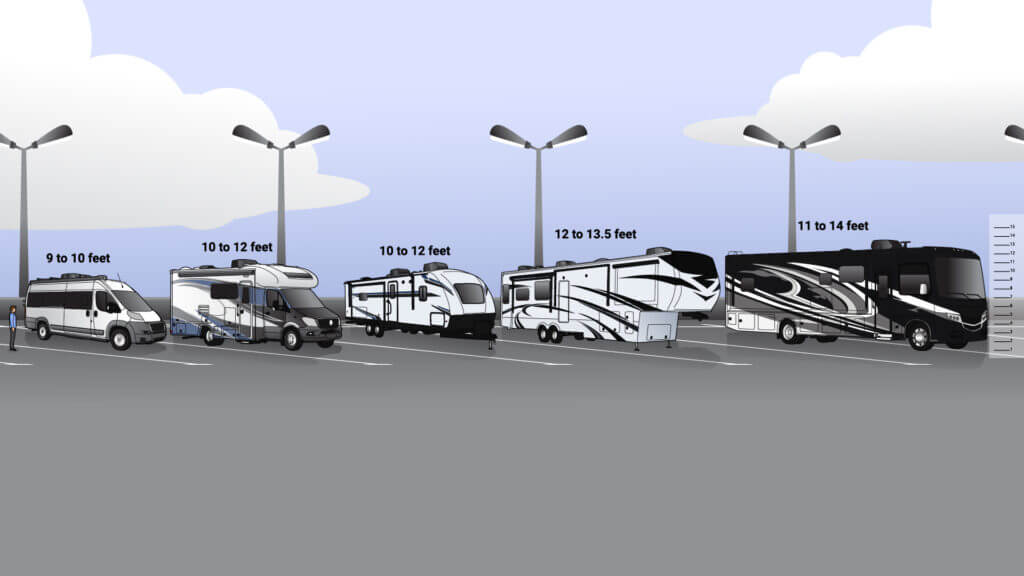
Know Before You Go!
If you’re shopping for the perfect RV, the height should be a top consideration of your prospective choices. If you want to explore every nook and cranny of the world and take the road less traveled, you might consider a recreational vehicle that’s not at the maximum limit for underpass heights.
But if you envision traveling the interstate to visit familiar campgrounds, and you enjoy planning your excursion ahead of time, then a taller, more spacious vehicle might be in your future. Either way, you’ll make an adventure out of every journey if you first ask the dealer, “How tall is that RV?”




